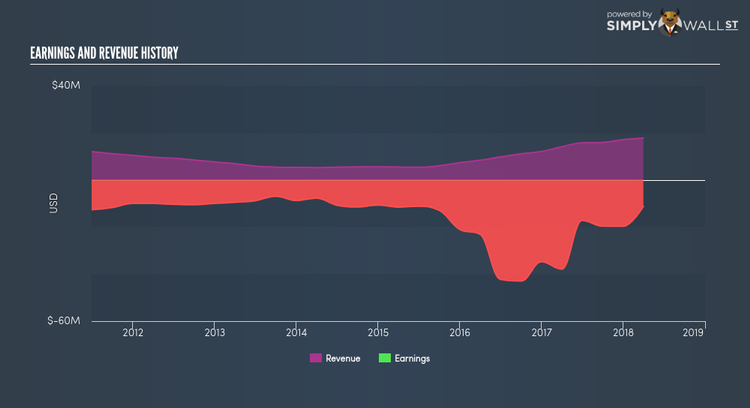NeuroMetrix Inc (NASDAQ:NURO): What Does It Mean For Your Portfolio?

For NeuroMetrix Inc’s (NASDAQ:NURO) shareholders, and also potential investors in the stock, understanding how the stock’s risk and return characteristics can impact your portfolio is important. Every stock in the market is exposed to market risk, which arises from macroeconomic factors such as economic growth and geo-political tussles just to name a few. This is measured by its beta. Not every stock is exposed to the same level of market risk, and the market as a whole represents a beta value of one. A stock with a beta greater than one is considered more sensitive to market-wide shocks compared to a stock that trades below the value of one.
View our latest analysis for NeuroMetrix
What does NURO’s beta value mean?
NeuroMetrix’s beta of 0.26 indicates that the company is less volatile relative to the diversified market portfolio. The stock will exhibit muted movements in both the downside and upside, in response to changing economic conditions, whereas the general market may move by a lot more. NURO’s beta indicates it is a stock that investors may find valuable if they want to reduce the overall market risk exposure of their stock portfolio.
How does NURO’s size and industry impact its risk?
NURO, with its market capitalisation of US$10.03M, is a small-cap stock, which generally have higher beta than similar companies of larger size. But, NURO’s industry, medical equipment, is considered to be defensive, which means it is less volatile than the market over the economic cycle. As a result, we should expect a high beta for the small-cap NURO but a low beta for the medical equipment industry. It seems as though there is an inconsistency in risks from NURO’s size and industry. A potential driver of this variance can be a fundamental factor, which we will take a look at next.
Can NURO’s asset-composition point to a higher beta?
During times of economic downturn, low demand may cause companies to readjust production of their goods and services. It is more difficult for companies to lower their cost, if the majority of these costs are generated by fixed assets. Therefore, this is a type of risk which is associated with higher beta. I examine NURO’s ratio of fixed assets to total assets to see whether the company is highly exposed to the risk of this type of constraint. Given that fixed assets make up less than a third of the company’s total assets, NURO doesn’t rely heavily upon these expensive, inflexible assets to run its business during downturns. As a result, the company may be less volatile relative to broad market movements, compared to a company of similar size but higher proportion of fixed assets. Similarly, NURO’s beta value conveys the same message.
What this means for you:
You may reap the benefit of muted movements during times of economic decline by holding onto NURO. Its low fixed cost also means that, in terms of operating leverage, its costs are relatively malleable to preserve margins. In order to fully understand whether NURO is a good investment for you, we also need to consider important company-specific fundamentals such as NeuroMetrix’s financial health and performance track record. I highly recommend you to complete your research by taking a look at the following:
Financial Health: Is NURO’s operations financially sustainable? Balance sheets can be hard to analyze, which is why we’ve done it for you. Check out our financial health checks here.
Past Track Record: Has NURO been consistently performing well irrespective of the ups and downs in the market? Go into more detail in the past performance analysis and take a look at the free visual representations of NURO’s historicals for more clarity.
Other High-Performing Stocks: Are there other stocks that provide better prospects with proven track records? Explore our free list of these great stocks here.
To help readers see pass the short term volatility of the financial market, we aim to bring you a long-term focused research analysis purely driven by fundamental data. Note that our analysis does not factor in the latest price sensitive company announcements.
The author is an independent contributor and at the time of publication had no position in the stocks mentioned.

